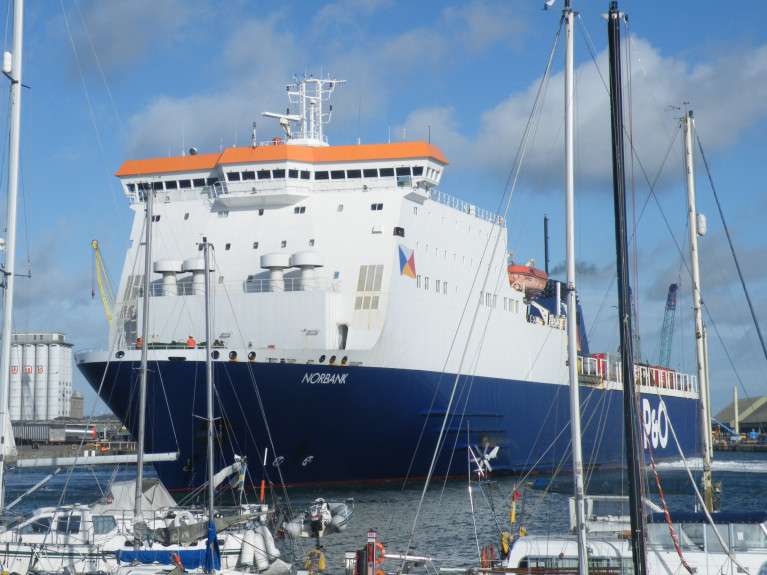Displaying items by tag: Annual Docking
An Irish Sea ferry was among those at UK shipyards on England's North Sea coast, where A&P North East's Tyne and Tees faclities reported a strong two-month period.
Afloat adds the ferry, ro pax Norbank, which P&O Ferries operates on the Dublin-Liverpool link, had called for annual docking, while twin Norbay and chartered in freight-only vessel, Stena Forcaster continued sailings.
Also in April, the same ferry owner's, Pride of Kent, a passenger ferry docked for steel repairs as part of its annual maintenance programme.
Asides A&P North East carrying out work on ferries, other ships in the form of tankers, dredgers and OSVs called on the business’s engineering and ship repair expertise.
According to the shipyard team, currently at the facility is Prysmian’s cable laying barge, Ulisse, after a successful dry docking period for a special survey. In addition docked on the Tyne, the diving support vessel Boka Polaris for a change of owners’ livery.
Scottish-based Northlink Ferries (see CMAL acquired) has also selected A&P North East to carry out a number of small repairs to ro-ro MV Helier when the freighter visits later this month.
A number of mobilisations have also been delivered including the Normand Samson in the Port of Tyne as well as the Olympic Triton and Zwerver I in Teesside.
The Tyne-based team is also preparing to begin mobilisation work for Prysmian’s Da Vinci, described as the most capable cable layer with the highest carousel capability on the market.
Over at A&P Tees, the last few months have seen the team deliver annual dockings for the City of Westminster, Arco Dijk and Sand Falcon dredgers as well as a growing number of offshore vessels thanks to the facility’s proximity to the North Sea. The most recent project was for North Star Shipping’s Grampian Sovereign.
Other projects have included a Condition Assessment Programme (CAP) survey for the tanker vessel Mersey Fisher, routine maintenance work for Briggs Marine’s Forth Atlas barge and Forth Warrior tug, and a return maintenance visit from PD Teesport’s Cleveland County.
Speaking about the recent successes at both North East facilities Chris Davies, Business Development Manager for Marine at A&P Group said: “The market is very buoyant right now and the location of our two North East facilities makes us well placed to capitalise on the available work. We are pleased to secure more work in the offshore sector at A&P Tees in particular, and to leverage the growing expertise and resource we have in this area.
“The successes of the last few months reflect the hard work and dedication of our team throughout the pandemic and our long-standing relationships with clients and their returning vessels.”





























































